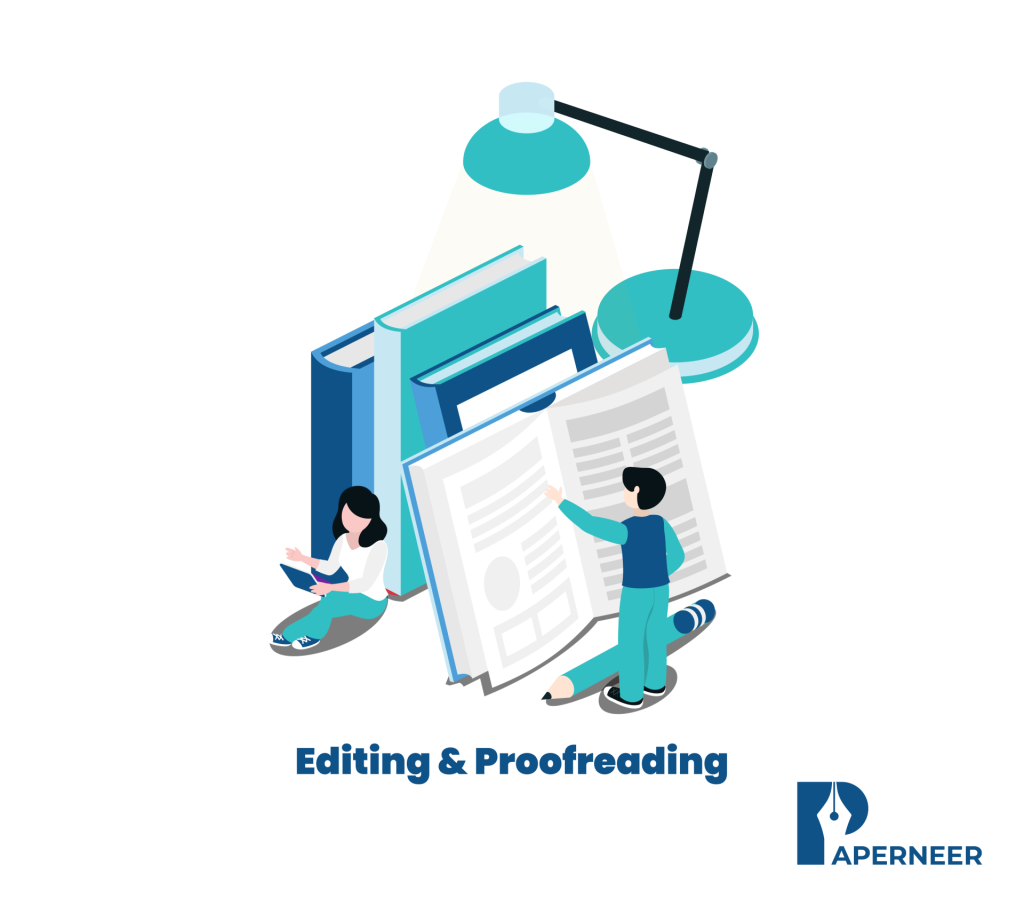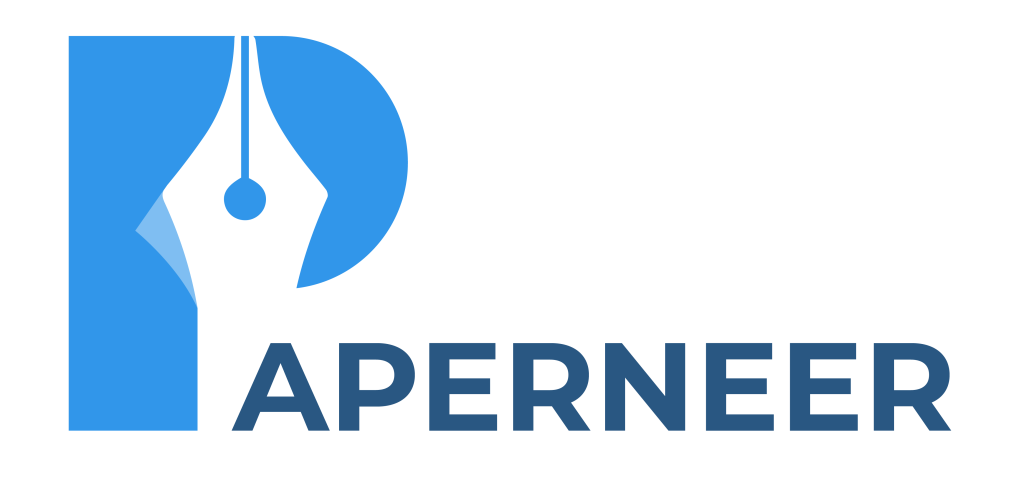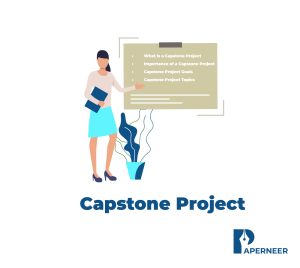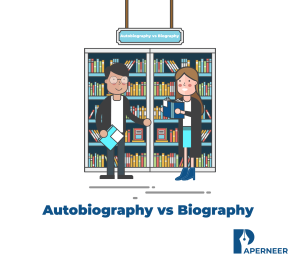Capstone Project – A Complete Guide A capstone project is sometimes the...
Read MoreA Guide to Editing and Proofreading

Editing and proofreading your academic work is crucial to presenting ideas clearly and professionally. Mastering editing and proofreading for your academic work enhances readability, whether you’re working on a research paper, essay, or thesis, improves flow, and refines the content to satisfy high academic standards. From elucidative arguments to correcting errors, written material, and proofreading your educational work, it is essential to speak about complicated ideas effectively.
In this blog brings you:
Why Editing and Proofreading Your Academic Work Is Essential for Academic Success
Editing and proofreading your academic work refine your arguments, enhance clarity, and ensure that descriptive linguistics, punctuation, and magnificence are polished. This method verifies that complicated concepts are sent accurately, making them accessible to a broader tutorial audience. Tutorial proofreading requires careful attention to technical language, formatting, and citation accuracy, all of which facilitate maintaining tutorial integrity and knowledge.
Thoroughly editing and proofreading demonstrates a commitment to high standards and attention to detail, which is crucial in any tutorial context. From syntax to citation consistency, written material and proofreading your tutorial work demonstrates thoughtfulness and respect for your readers.
What Is Academic Proofreading?
Academic Proofreading focuses on distinguishing and correcting errors in synchronic linguistics, spelling, punctuation, and format. Writing and proofreading require precision and consistency, making this method integral to academic work, particularly following specific vogue guides (e.g., APA, MLA, Chicago). Educational proofreading requires familiarity with academic standards and a keen eye for detail, unlike general proofreading to ensure that every argument is bestowed effectively and every educational need is met.
Proofreading work involves checking for accuracy in terms, citations, and layout. It aims to shine the document, ensuring that Language is skilled and the writing flows logically, which is crucial in maintaining quality educational work.
Steps to Edit and Proofread Your Academic Work
Taking a scientific approach is essential when you write, edit, and proofread your academic work. Follow these steps to confirm that each facet of your writing is refined:
Write with a piece of writing while keeping clarity and structure in mind when drafting. This can contour the piece of writing and proofreading method.
Please take an opportunity Before Proofreading: Once you have drafted, taking an opportunity will assist you in coming back with recent eyes, making it easier to identify errors.
Focus on Structure and Flow: Review your ideas’ organization, ensuring every section connects swimmingly.
Check for Clarity: certify every paragraph supports the most argument, which is complicated ideas, and explain the square measure effectively.
Edit for synchronic linguistics and Style: To confirm clarity, address any problems in synchronic linguistics, punctuation, and syntax.
Final ascertain Line-by-Line: Make a final revision of your work to identify minor inaccuracies. This careful stage guarantees the completeness of your piece for submission.
Tips for Effective Editing and Proofreading
Improving your academic work’s standard of editing and Proofreading needs bound best practices. Here are essential tips:
Read Aloud: Scanning aloud highlights awkward phrasing and makes additional sentence flow problems apparent.
Use written Copies: Reviewing a written copy will reveal errors that will be lost on a screen.
Check format Consistency: Listen to headings, font sizes, and citation designs, ensuring they’re consistent throughout the document.
Highlight perennial Words or Phrases: Distinguishing perennial terms makes it easier to vary Language and improve readability.
Utilize Redaction and Proofreading Tools: Tools like Grammarly and Writer will facilitate the establishment of descriptive linguistics problems and magnificence inconsistencies.
Verify Citations and References: Guarantee all citations and references are formatted consistently with the desired vogue guide.
These tips can considerably enhance the effectiveness of redaction and proofreading your tutorial work, serving to help you communicate ideas more clearly.
Proofreading Work Strategies
Approach proofreading your educational work bit by bit, allowing yourself to focus on different areas of improvement. Here’s the way to approach it:
Divide Proofreading into centred Passes: specialize in specific aspects like descriptive linguistics, then structure, and at last, data format details.
Create a Proofreading Schedule: permit dedicated time for proofreading instead of speeding through it at the second.
Check for various Errors in every Pass: specializing in one issue at a time—such as clarity or citation accuracy—ensures you don’t miss vital details.
Read Backwards for orthography and Grammar: this system isolates words, serving to notice orthography and descriptive linguistics errors effectively.
Seek a Peer Review: A fresh perspective helps catch errors and offers feedback on areas for improvement.
Applying these methods throughout Proofreading will build written material and make proofreading your educational work more manageable and thorough.
Common Challenges in Proofreading for Academics
Proofreading your educational work presents distinctive challenges because of the specialized nature of academic writing. Here are a unit some common difficulties and solutions:
Technical Terms and Jargon: educational writing usually includes complicated Language. Solution: Keep a gloss to envision terms and guarantee they’re used properly.
Citation vogue Consistency: Adhering to specific citation designs will be tedious; however, it is crucial. Solution: Use a citation manager to contour data format and avoid citation errors.
Dense Language and Complicated Arguments: educational work involves complex explanations and careful arguments. Solution: try for clarity, and think about providing transient definitions or explanations for complex ideas.
Avoiding Personal Bias: Maintaining judgment is crucial in educational writing. Solution: Approach your work with a vital eye and obtain peer feedback to ensure neutrality. Recognizing these challenges and victimization sensible solutions will considerably improve your educational work’s standard of redaction and Proofreading.
Tools to Support Editing and Proofreading for Academics
These tools provide grammar, style, and citation support, aiding you in editing and proofreading your academic work. Here are some essential tools:
Grammarly: Offers period synchronic linguistics and punctuation suggestions to reinforce sentence clarity and flow.
ProWritingAid: Provides reports on redundancies, sentence length, and different rhetorical problems, creating a comprehensive written material tool.
Hemingway App: Highlights advanced sentences, suggests simplifications, and improves readability in educational work.
Turnitin: This tool checks for originality and similarity, ensuring all sources are correctly cited.
Mendeley and Zotero: Citation managers that contour citation data formatting, making it easier to keep up consistency.
Good topics for editing and proofreading your Academic work
Here square measure ten innovative issues associated with editing and proofreading your academic work:
- A typical piece of writing and Proofreading Mistakes
- Why Pieces of Writing and Proofreading Matter
- Editing vs. Proofreading in domain
- Creating a tutorial piece of writing listing
- Top piece of writing and Proofreading Tools
- Proofreading ways for tutorial Writing
- How Proofreading Enhances Clarity
- Overcoming Educational Proofreading Challenges
- Editing and Proofreading Your Thesis
- Tips for Non-Native English Proofreaders
Conclusion
Effective editing and Proofreading of your academic work are essential to presenting a refined, high-quality piece that meets tutorial standards. By consistently processing your writing, you guarantee clarity, coherence, and knowledge, making your arguments impactful. The guide offers strategies for proofreading, highlights common challenges, and recommends tools to streamline the process. Whether or not you are performing on AN essay, thesis, or analysis paper, thorough redaction and Proofreading of your tutorial work can considerably elevate its quality and contribute to tutorial success.
Say goodbye to Mistakes in Term Papers
Avoid Errors in Term Papers Writing a theme may be a vital tutorial task that needs careful designing and...
Read MoreUnraveling the Stories: Autobiography vs Biography
Autobiography vs Biography Understanding the excellence between autobiography and biography is crucial for...
Read More




